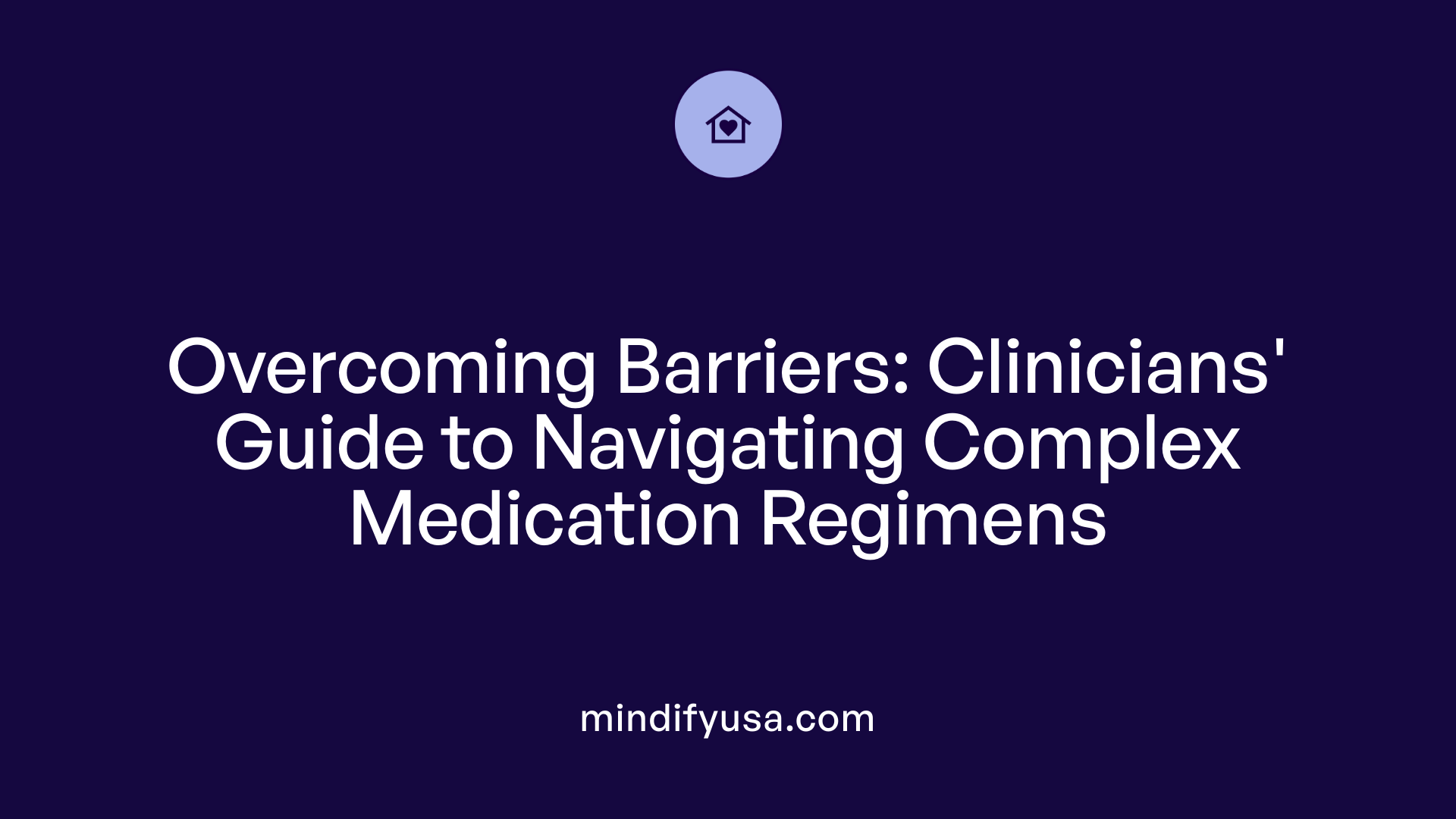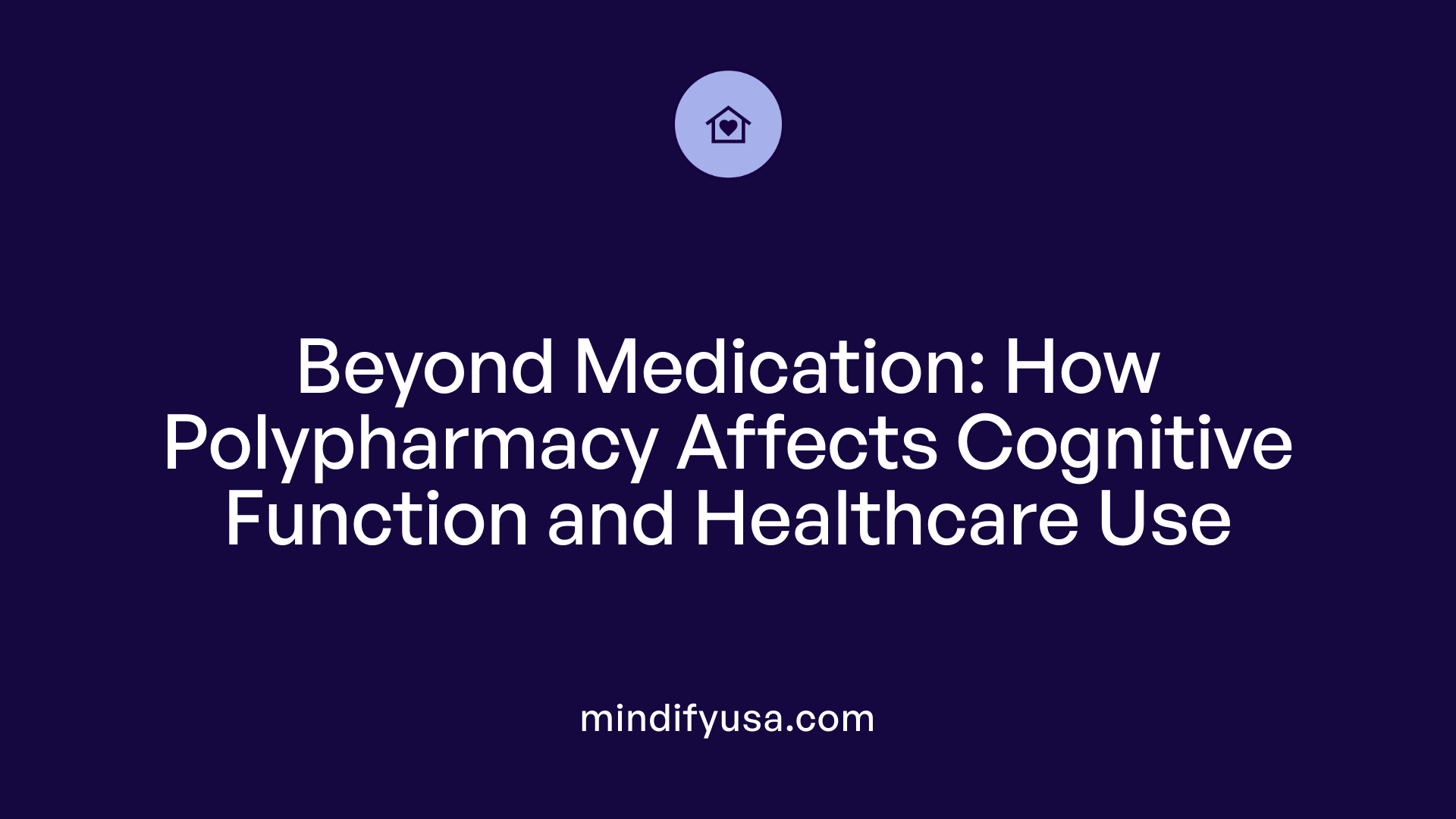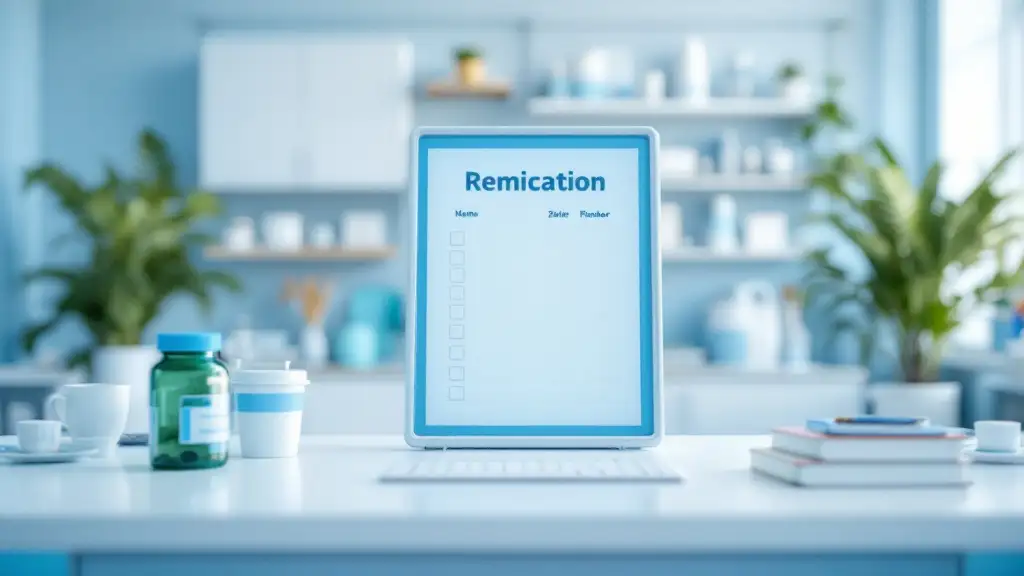Understanding the Challenges of Polypharmacy in Elderly Psychiatric Patients
Polypharmacy in elderly psychiatric patients presents significant clinical challenges due to the complex interplay between multiple medications, age-related physiological changes, and the multifaceted nature of mental health conditions. Addressing these issues requires a comprehensive understanding of prevalence, risks, and management strategies to optimize care and reduce adverse outcomes.
Prevalence and Patterns of Polypharmacy in Geriatric Psychiatry

What is the prevalence of polypharmacy among elderly psychiatric patients?
Polypharmacy is highly prevalent among older adults receiving psychiatric care, with studies showing rates as high as 80% in hospitalized psychiatric populations. Overall, in geriatric psychiatric settings, approximately 50-60% of patients are on five or more medications concurrently. The prevalence tends to increase with age, complexity of mental health conditions, and the presence of multiple comorbidities like dementia, depression, and schizophrenia.
In community settings, the prevalence remains significant, often affecting over 40% of elderly with mental health issues. The rising number of older adults globally, especially those with multimorbidity, contributes to the increase in polypharmacy within this group.
What are common medication classes involved in psychiatric polypharmacy?
Psychotropic medications are the primary classes involved in psychiatric polypharmacy among older adults. These include:
- Antipsychotics: often used for schizophrenia, mood stabilization, or behavioral symptoms in dementia.
- Antidepressants: such as SSRIs and SNRIs for depression and anxiety.
- Anxiolytics and sedatives: including benzodiazepines and sleep aids.
- Mood stabilizers: like lithium or valproate.
- CNS stimulants: occasionally prescribed for attention deficits.
In addition, patients often receive medications for physical comorbidities that contribute to overall medication burden, like antihypertensives, statins, and diabetes medications.
What are the patterns of medication use in conditions like dementia, depression, and schizophrenia?
In dementia, antidepressants, antipsychotics, and sedatives are frequently prescribed to manage behavioral and psychiatric symptoms. Notably, the use of three or more CNS-active drugs poses significant risks, including falls, overdoses, and cognitive worsening.
For depression, elderly patients may be prescribed multiple antidepressants along with anxiolytics, contributing to polypharmacy. Often, clinicians combine medications to address complex or refractory cases.
In schizophrenia and other psychotic disorders, polypharmacy frequently involves the combination of antipsychotics with mood stabilizers or sedatives to control symptoms, which increases the complexity of care.
| Condition | Common Medications | Typical Number of Drugs Prescribed | Risks Involved |
|---|---|---|---|
| Dementia | Antipsychotics, antidepressants, sedatives | 8 medications on average | Falls, cognitive decline, overdoses |
| Depression | SSRIs, SNRIs, anxiolytics | 3-5 medications | Drug interactions, side effects |
| Schizophrenia | Antipsychotics, mood stabilizers | 7 medications | Adverse effects, metabolic issues |
Why is polypharmacy a concern in elderly patients?
Polypharmacy raises significant safety concerns because it amplifies the risks of adverse drug reactions (ADRs), many of which can be severe in the elderly. Age-related changes such as decreased renal and hepatic function, altered body composition, and increased sensitivity to certain drug effects make older adults more vulnerable.
The most worrisome outcomes include falls, fractures, cognitive impairment, medication nonadherence, and hospitalizations. Moreover, polypharmacy can lead to prescribing cascades, where side effects are misinterpreted as new health issues, leading to further unnecessary prescriptions.
Drug interactions are particularly problematic with CNS-active medications, increasing the risk of overdoses, confusion, and coma. The use of multiple medications also complicates medication management, increasing nonadherence and diminishing quality of life.
How does medication use differ in specific conditions like dementia, depression, and schizophrenia?
Patients with dementia often have the highest medication burden, with a median of 8 medications, primarily to manage behavioral symptoms. The risks of CNS-active polypharmacy are high due to age and disease progression.
In depression, polypharmacy may stem from the use of combination antidepressants and adjunctive medications, sometimes driven by multiple failed treatment attempts.
Schizophrenia in older adults often involves multiple antipsychotics along with other psychotropic drugs, reflecting attempts to manage persistent symptoms but raising safety concerns.
Understanding these patterns helps clinicians target interventions more effectively, emphasizing deprescribing efforts where possible.
Clinical Challenges in Managing Multiple Medications in Older Adults with Psychiatric Conditions

How can assessment tools evaluate polypharmacy-related risks?
Assessment tools are essential in evaluating the risks associated with polypharmacy, especially in older adults with psychiatric conditions. These tools often incorporate medication appropriateness indices such as the Beers Criteria, STOPP/START guidelines, and the Medication Appropriateness Index, which help identify potentially inappropriate medications based on patient age, health status, and current medication profiles. Risk scales like the Drug Burden Index quantify cumulative exposure to anticholinergic and sedative medications that contribute to adverse effects.
These assessments also consider drug-drug interactions and patient-specific factors, such as renal and hepatic function, to flag potentially harmful combinations or excessive medication use. They facilitate guided decision-making aimed at minimizing medication-related harm, streamlining therapy, and enhancing overall safety. Ultimately, these tools assist clinicians in tailoring deprescribing strategies and optimizing medication regimens, especially for complex elderly psychiatric patients.
Why is managing multiple medications particularly challenging in the elderly?
Managing several medications in older adults presents unique challenges due to age-associated physiological changes. Diminished renal and hepatic function alters drug absorption, distribution, and clearance, often prolonging half-life and increasing toxicity risks. Cognitive decline and sensory impairments hinder proper medication adherence, while physical frailty can complicate medication administration.
The presence of multimorbidity leads to complex prescribing patterns, increasing potential for harmful drug-drug and drug-disease interactions. Polypharmacy can also trigger prescribing cascades—where side effects are mistaken for new symptoms—leading to additional unnecessary medications. Furthermore, the use of OTC and complementary medicines without proper disclosure complicates regulation.
These challenges necessitate meticulous medication management, ongoing reviews, and tailored deprescribing plans that consider physiological vulnerabilities and patient preferences, to promote safety and uphold quality of life.
What are the risks of drug interactions and side effects in polypharmacy?
Polypharmacy significantly raises the likelihood of drug interactions and side effects, especially in the elderly. Concomitant use of multiple medications can lead to pharmacodynamic interactions, such as enhanced sedation from CNS depressants or increased bleeding risk with anticoagulants combined with antiplatelet agents.
Pharmacokinetic interactions, like enzyme inhibition or induction affecting drug metabolism, can result in elevated plasma levels and toxicity. For example, anticholinergic drugs may compound cognitive impairment, while benzodiazepines increase fall risk. Such interactions can cause adverse effects including delirium, confusion, hypotension, and falls—major contributors to hospitalization and morbidity.
Polypharmacy-associated side effects often necessitate emergency care, prolong hospital stays, and impair functional independence, emphasizing the importance of careful medication oversight.
How does age-related physiological change influence medication response and safety?
Aging induces significant physiological changes affecting how drugs are processed and responded to in the body. Reduced renal function decreases clearance of renally-excreted medications, risking accumulation and toxicity. Hepatic metabolism slows, prolonging drug half-life and heightening adverse effects.
Increased body fat and decreased total body water alter drug distribution, resulting in higher plasma concentrations of lipophilic drugs and reduced hydrophilic drug levels. Lower lean muscle mass further impacts drug handling.
These changes require clinicians to adjust dosages, select safer drugs, and monitor responses closely. For example, careful titration of benzodiazepines and antipsychotics is crucial to prevent falls and cognitive decline, common challenges in elderly psychiatric care.
What are the considerations specific to deprescribing in psychiatric care for elderly patients?
Deprescribing psychiatric medications in older adults involves balancing symptom control with minimizing harm. It begins with thorough assessments using evidence-based tools (e.g., Beers Criteria) to identify potentially inappropriate drugs like benzodiazepines or antipsychotics, which carry high fall and cognitive decline risks.
A gradual tapering process is essential to prevent withdrawal symptoms and relapse. Engaging patients and caregivers in shared decision-making ensures treatment aligns with patient goals, preferences, and tolerances.
Nonpharmacological interventions, such as behavioral therapies and environmental modifications, should be prioritized. Regular follow-up helps monitor mental health stability and adjust deprescribing plans accordingly. Focused strategies aim to reduce medication burden, improve safety, and sustain quality of life.
What role do healthcare providers play in managing polypharmacy?
Healthcare providers—including physicians, pharmacists, and nurses—are pivotal in managing polypharmacy. Their responsibilities encompass conducting comprehensive medication reviews, assessing for appropriateness, potential interactions, and adverse effects.
Implementing decision support tools and guidelines aids in identifying high-risk medications and deciding when to deprescribe. Providers should also educate patients and families about medication purposes and potential risks, fostering shared decision-making.
During care transitions, thorough medication reconciliation prevents errors and duplicate therapies. Multidisciplinary collaboration, continuous monitoring, and use of electronic health records streamline management, reduce harm, and improve outcomes.
More Information
| Aspect | Description | Impact | Tools/Guidelines |
|---|---|---|---|
| Polypharmacy Definition | Use of five or more medications | Risk of adverse events | Beers Criteria, STOPP/START |
| Age-Related Changes | Renal, hepatic, body composition | Increased toxicity risks | Clinical monitoring, dose adjustments |
| Medications of Concern | Benzodiazepines, anticholinergics | Falls, cognitive decline | Regular review, deprescribing |
| Strategies | Medication reconciliation, patient engagement | Enhanced safety | Electronic decision support, multidisciplinary teams |
| Outcomes | Hospitalization, mortality | Patient safety improvements | Ongoing education, policy reforms |
This comprehensive management requires recognizing the unique vulnerabilities of older patients with psychiatric conditions, balancing medication efficacy with safety, and employing interdisciplinary approaches. Regular assessments, cautious deprescribing, and patient-centered care are vital to mitigating risks associated with polypharmacy and enhancing health outcomes.
Impact of Polypharmacy on Cognitive Health, Quality of Life, and Healthcare Utilization

What are the effects of polypharmacy in the elderly?
Polypharmacy in older adults can significantly impact their health and daily functioning. Due to age-related changes in how medications are processed—such as decreased liver and kidney function—elderly patients are more prone to adverse drug reactions (ADRs). These reactions often include confusion, cognitive impairment, and worsening of existing dementia conditions. The accumulation of multiple medications can impair mobility and independence, making routine activities more challenging.
Furthermore, the increased medication burden elevates the risk of hospitalization from drug-related complications like falls, overdoses, and complex drug interactions. This can lead to a decline in overall quality of life, as physical and mental health deteriorate. Regular medication reviews and deprescribing are essential strategies to reduce these risks, helping maintain cognitive health and functional capacity in older adults.
How does polypharmacy influence healthcare utilization?
Polypharmacy is associated with higher rates of healthcare service use. Older adults taking five or more medications are more likely to experience adverse events, such as falls, delirium, and drug interactions, which often result in emergency department visits and hospital admissions. These drug-related complications increase healthcare costs substantially, as they require diagnostic testing, treatments, and extended hospital stays.
Additionally, managing multiple medications demands frequent monitoring and follow-up appointments, placing a strain on healthcare resources. Implementing comprehensive medication management practices—including regular reviews and deprescribing—can reduce unnecessary hospitalizations, lower healthcare expenses, and improve patient safety. Such measures ensure that medication regimens are appropriate and minimize the burden on healthcare systems.
What is the relationship between polypharmacy and social isolation or loneliness?
Research has uncovered a notable link between polypharmacy and increased social isolation among older adults. The side effects of multiple medications—such as fatigue, dizziness, and cognitive issues—can hinder social participation, leading to withdrawal from community and family activities. These physical limitations can diminish opportunities for meaningful social engagement.
Moreover, reliance on caregivers for medication management can reduce an individual's sense of independence, further contributing to feelings of loneliness. Over time, the continued complexity of medication regimens may foster emotional distress and social disconnection. Holistic approaches to elderly care that incorporate social support, psychological counseling, and medication review are vital for mitigating these social consequences and enhancing overall well-being.
The Role of Systemic Strategies and Healthcare Policy in Addressing Polypharmacy

What systemic interventions and provider roles are involved in managing polypharmacy?
Managing polypharmacy effectively requires a combination of systemic strategies and active involvement from healthcare providers. Healthcare organizations are encouraged to adopt comprehensive medication review protocols, often facilitated by multidisciplinary teams that include physicians, pharmacists, and nurses. These teams evaluate the necessity of each medication, monitor for adverse effects, and consider deprescribing unnecessary or harmful drugs.
Electronic prescribing systems equipped with clinical decision support tools play a crucial role in flagging potentially inappropriate medications, drug interactions, and duplicate therapies. Such digital tools help providers make informed decisions and promote safer prescribing patterns.
Provider responsibilities extend beyond individual clinical judgment. They involve ongoing education and training to stay current with evidence-based guidelines like the Beers Criteria and STOPP/START. Through regular medication reconciliation during patient visits and transitions of care, providers can identify and mitigate polypharmacy risks. Shared decision-making, based on patient preferences and health goals, is essential in optimizing treatment plans.
In summary, coordinated efforts among healthcare professionals leveraging technology, guidelines, and teamwork are vital in managing polypharmacy, reducing harm, and enhancing health outcomes.
What systemic reforms are needed to effectively address polypharmacy?
Addressing the complex issue of polypharmacy calls for comprehensive systemic reforms. At the policy level, healthcare systems should incentivize medication review and deprescribing through reimbursement models that recognize the value of medication optimization. Establishing national and institutional guidelines that prioritize deprescribing and safe medication use creates a standardized approach.
Implementation of advanced electronic health records (EHRs) with integrated decision support systems is paramount. These systems can provide real-time alerts about potentially inappropriate medications or dangerous interactions during prescribing or reviewing medications.
Interdisciplinary care models, where pharmacists and other healthcare providers are actively involved in medication management, have shown promise in reducing unnecessary prescriptions. Education campaigns aimed at both providers and patients can help raise awareness about the risks of polypharmacy and the benefits of deprescribing.
Regulatory frameworks should support evidence-based prescribing practices, facilitate research into deprescribing, and ensure ongoing surveillance of medication safety. These reforms aim to align healthcare delivery with the goal of minimizing harmful polypharmacy while maintaining necessary treatment.
How can technology support polypharmacy management?
Technology is integral to modern efforts in managing polypharmacy. Electronic health records equipped with clinical decision support systems can automatically identify high-risk medications, flag potential drug-drug interactions, and suggest alternative therapies or deprescribing options. These systems facilitate safer prescribing and review processes.
AI-powered algorithms can analyze large datasets to identify patterns of inappropriate medication use, prioritize patients for medication review, and predict adverse events based on individual patient profiles.
Telemedicine platforms expand access to medication management, allowing healthcare providers to conduct remote medication reviews, monitor adherence, and respond promptly to issues, which is especially valuable for elderly patients with mobility limitations.
Digital patient education platforms are also helpful, providing tailored information about medication risks and deprescribing benefits, fostering shared decision-making.
Overall, leveraging technology enhances accuracy, efficiency, and safety in polypharmacy management, ultimately reducing adverse drug events and improving quality of life for older adults.
Clinician-Guided Approaches for Safe and Effective Medication Use in Elderly Psychiatric Patients
How does shared decision making improve polypharmacy management?
Engaging elderly psychiatric patients and their families through shared decision-making ensures that treatment plans align with individual preferences, life goals, and values. This collaborative process involves discussions about the pros and cons of each medication, potential side effects, and alternatives. By incorporating patient and caregiver input, clinicians foster trust, increase adherence to prescribed regimens, and reduce the likelihood of unnecessary or high-risk medications.
Furthermore, shared decision-making facilitates open communication about deprescribing options, making it easier to balance therapeutic benefits with the risks of polypharmacy. In elderly psychiatric care, where medications like psychotropics and opioids are common, this personalized approach helps tailor treatments that maximize benefits such as symptom control and quality of life, while minimizing adverse effects like falls, cognitive decline, or drug interactions. Ultimately, empowering patients in their care leads to safer, more acceptable, and effective medication management.
The Future of Managing Polypharmacy in Elderly Psychiatric Care

What scientific evidence supports deprescribing in elderly psychiatric patients?
Recent research underscores the safety and benefits of deprescribing psychotropic medications among older adults with psychiatric conditions. Systematic reviews and clinical trials reveal that tailored deprescribing protocols can significantly reduce medication burdens without aggravating neuropsychiatric symptoms. For example, studies demonstrate a favorable impact on safety profiles, showing decreases in adverse drug reactions, emergency hospitalizations, and mortality rates. Longitudinal studies further emphasize the importance of careful tapering, involving patient participation, and conducting regular reassessments to preserve mental health stability while minimizing medication-related harms. These findings support integrating structured deprescribing strategies into routine geriatric psychiatric care, helping clinicians balance mental health management with the risks associated with polypharmacy.
How might innovations in personalized medicine and AI impact polypharmacy management?
Emerging advancements in personalized medicine combined with artificial intelligence (AI) are poised to transform the landscape of polypharmacy management in older adults. Personalized approaches utilize genetic testing, biomarkers, and comprehensive clinical data to tailor medication regimens specifically suited to each patient’s unique biological profile. AI-driven decision support systems can analyze vast, complex medication data sets to pinpoint interactions, high-risk drug combinations, and opportunities for safe deprescribing. These technologies facilitate precision prescribing, reduce unnecessary or duplicated medications, and enhance safety by predicting individual responses to drugs. As a result, elderly psychiatric patients can benefit from optimized treatments that improve adherence and reduce adverse effects. Such innovations aim to make medication management more efficient, personalized, and safer, ultimately improving health outcomes and quality of life.
What policy and healthcare reform efforts are necessary to improve polypharmacy management?
Effective policy and healthcare reforms are essential to address the challenges of polypharmacy among the elderly. Initiatives should incentivize routine medication reviews and the practice of deprescribing, integrating these into standard care protocols. Supporting interdisciplinary collaboration—particularly involving pharmacists, geriatricians, psychiatrists, and primary care providers—is vital for comprehensive medication management. Standardization of deprescribing protocols and guidelines, such as the Beers Criteria and STOPP/START, must be reinforced through policy. Additionally, updating electronic health records with integrated decision support tools can provide clinicians with real-time guidance on prescribing practices. Funding targeted research on deprescribing efficacy and safety is crucial to establish evidence-based practices. Public health campaigns can raise awareness among patients and caregivers, empowering them to participate actively in medication management. These reforms aim to create a healthcare environment that values safe prescribing, reduces unnecessary medication use, and promotes sustainable, patient-centered care tailored to the aging population.
Additional Insights on Future Strategies
| Aspect | Current Status | Future Outlook | Impact on Elderly Psychiatric Care |
|---|---|---|---|
| Technological Integration | Limited AI use; manual reviews | Widespread AI decision support | Enhanced risk detection, personalized plans |
| Policy Support | Fragmented policies | Unified guidelines & incentives | Improved adherence to deprescribing protocols |
| Education & Training | Variable clinician knowledge | Mandatory geriatric pharmacology training | Better prescribing practices |
| Patient Engagement | Growing awareness | Empowered shared decision-making | Increased adherence, reduced harm |
| Research Focus | Emerging evidence | Large-scale, longitudinal data | Clearer evidence for tailored interventions |
The Role of Patient-Centered Care Models
Moving forward, embedding polypharmacy management within patient-centered care models is essential. These models prioritize shared decision-making, respecting patient preferences, and understanding individual health goals. They promote open discussions about medication risks and benefits, especially in complex cases involving dementia or multiple chronic conditions. Healthcare teams, including pharmacists and mental health specialists, collaboratively develop treatment plans aligned with patients’ values. Regular education, clear communication, and personalized monitoring are cornerstones of this approach. By emphasizing person-first care, these models strive to reduce unnecessary medications, improve quality of life, and strengthen trust between patients and clinicians. As the healthcare system evolves, integrating patient-centered frameworks with technological and policy innovations will be critical to effectively managing polypharmacy in elderly psychiatric patients.
Towards Safer and More Effective Elderly Psychiatric Care
Effective management of polypharmacy in elderly psychiatric patients requires an integrated approach that combines vigilant assessment, tailored deprescribing, multidisciplinary collaboration, and innovative use of technology. Emphasizing patient-centered care, leveraging evidence-based guidelines, and implementing systemic reforms are vital to minimizing risks and enhancing quality of life for this vulnerable population. Continued research and policy support will further advance strategies to balance therapeutic benefits with safety, ensuring optimal outcomes in geriatric mental health care.
References
- The dangers of polypharmacy and the case for deprescribing in ...
- Polypharmacy - StatPearls - NCBI Bookshelf
- Polypharmacy in Older Adults - Psychiatric Times
- Polypharmacy: Evaluating Risks and Deprescribing - AAFP
- Polypharmacy and Health-Related Quality of Life/Psychological ...
- Tackling Polypharmacy in Geriatric Patients: Is Increasing ...
- Polypharmacy in Older Adults: Deprescribe to Optimize
- Prevalence and factors associated with polypharmacy: a systematic ...
- Psychiatric and non-psychiatric polypharmacy among older adults ...
- Association of polypharmacy with occurrence of loneliness and ...






































































































